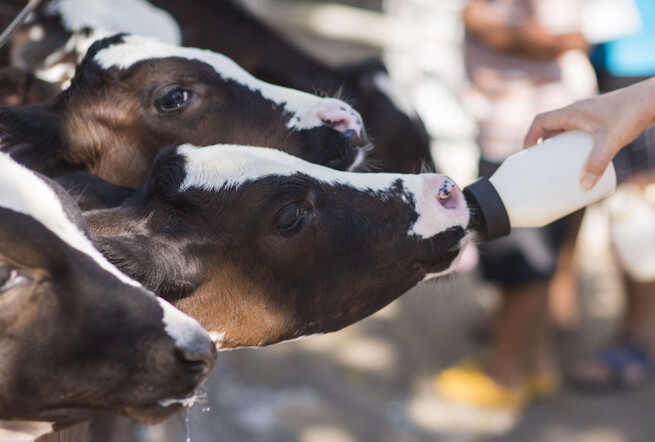Staggering home from a night on the “turps” might be a common sight amongst some of us Southerners. Seeing your calves stagger around in a similar manner is not so common.
This case of comatose calves began on a mild sunny day in September. The farmer had fed the calves in the morning and returned a few hours later to find two pens of the youngest calves asleep and the rest staggering around with their tongues hanging out (as if they had been drugged up on xylazine). On examination, the calves all appeared to have normal vital signs.
History was taken and urea had recently been sprayed onto pasture and the feeders had been left out in the fertilized paddock. The initial thought was that this could be urea toxicity, although no calves had died which didn’t fit with this differential. Not taking any chances, all feeders were cleaned thoroughly anyway and all calves recovered.
However, the next day the same thing occurred. The calves had the same symptoms and the vet told the farmer jokingly that the calves looked almost drunk… Blood samples were taken from the most severe cases and sent to the lab and the pathologist suggested to send it to the human lab next door as the description of these calves sounded indeed like they may have been intoxicated. The following results came back:
Calf 1: Alcohol 85.9 mmol/L
Calf 2: Alcohol 81.9 mmol/L
Calf 3: Alcohol 68.5 mmol/L
Calf 4: Alcohol 100.1 mmol/L
Calf 5: Alcohol 96.1 mmol/L
Allowable levels for drivers = <10.85mmol/L
Below is a chart which describes the clinical signs associated with different blood alcohol levels. Most people will be at stage 2 or 3 on a big night, or if you are Dutch maybe stage 4. All calves tested were in either stage 4 or 5.
How can this be?
Was the farmer feeding his favourite beer to the little dears? Was whiskey making them frisky, or was liquor causing them to be stupor?
Like a lot of dairy farms, calf milk is kept in one tank which is topped up daily by (un-cooled) milk. This tank is rarely cleaned completely out and may or may not be cooled. This can, under the right conditions, cause the milk to ferment. The process of fermentation converts lactose into ethanol and carbon dioxide, with “milk wine” as a result. In this case, a milk sample was taken for testing but it exploded on its travels to the lab; most likely the result of carbon dioxide building up from the milk fermenting. In order for fermentation to occur you need yeast; it is likely that wild yeast got into the milk tank and the conditions were favourable for this process to occur.
The milk tank was emptied and washed out and no more cases occurred. All calves recovered well from their exciting night out (after a good drench of water to prevent them from getting a hangover) and none of them had to visit Alcoholics Anonymous ……or did they?
Stage 1: 2.17-10.85mmol/L
Mild euphoria, decreased inhibitions, diminished attention & judgement
Stage 2: 10-21mmol/L
Euphoria, sedation, impaired coordination, decreased sensory responses to stimuli, decreased judgement
Stage 3: 32-65mmol/L
Confusion, disorientation, impaired balance, slurred speech
Stage 4: 54-86.8mmol/L
Sleep or stupor, marked muscular incoordination, markedly decreased response to stimuli, incontinence
Stage 5: 86.8-108.50mmol/L
Coma, hypothermia, respiratory & circulatory failure, possible death
- Adele English

